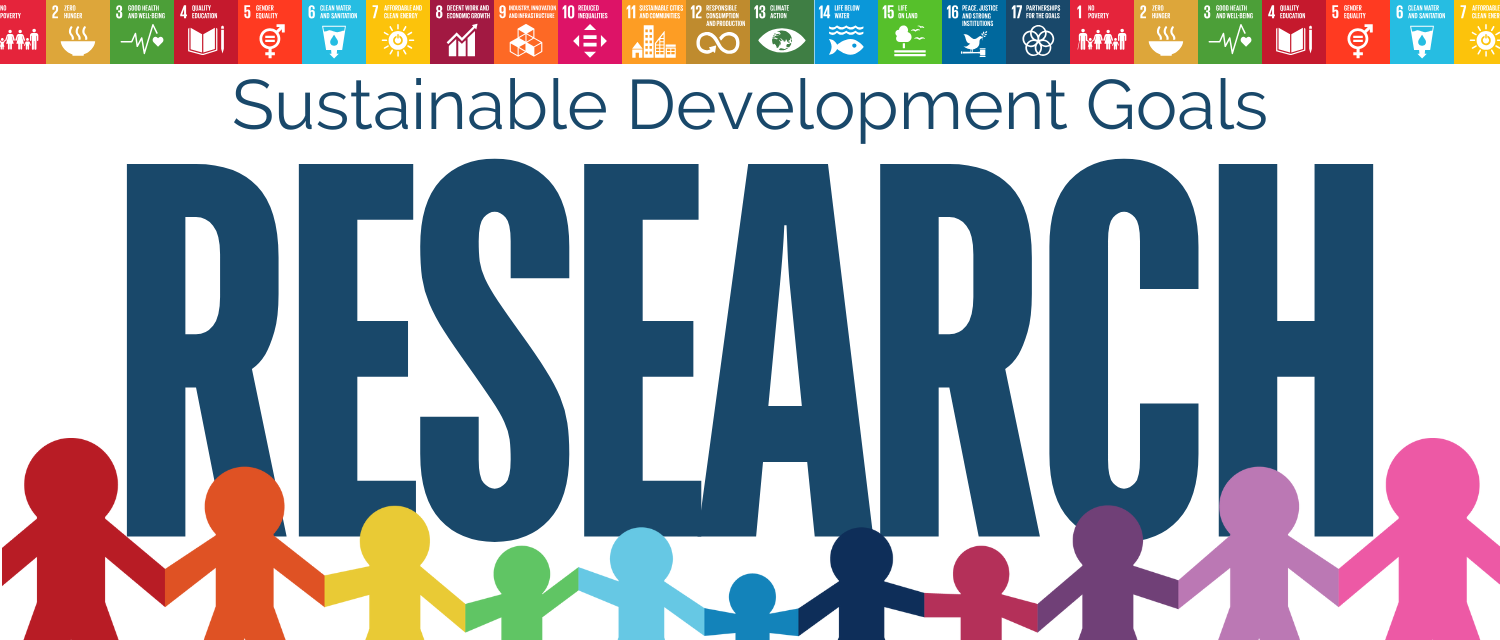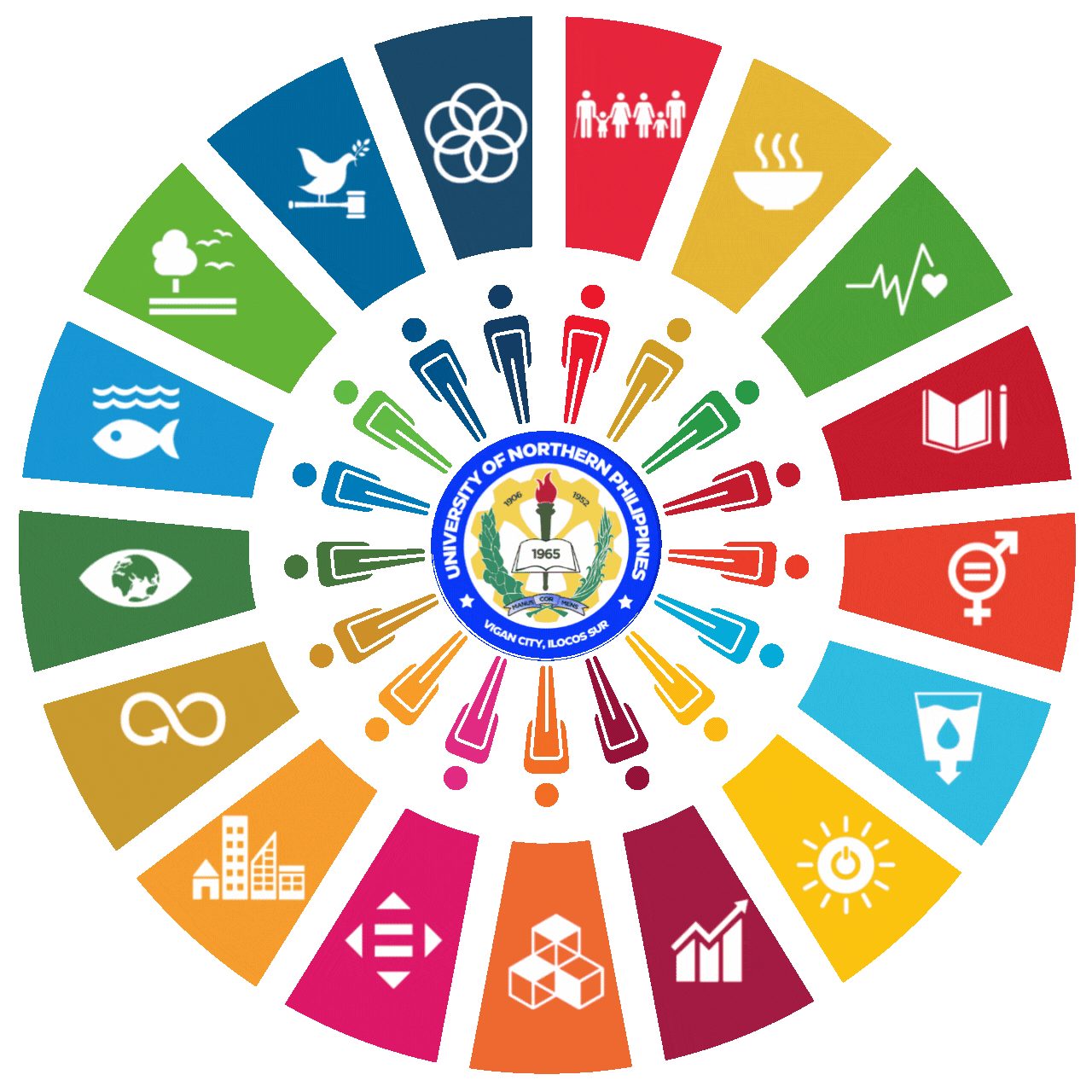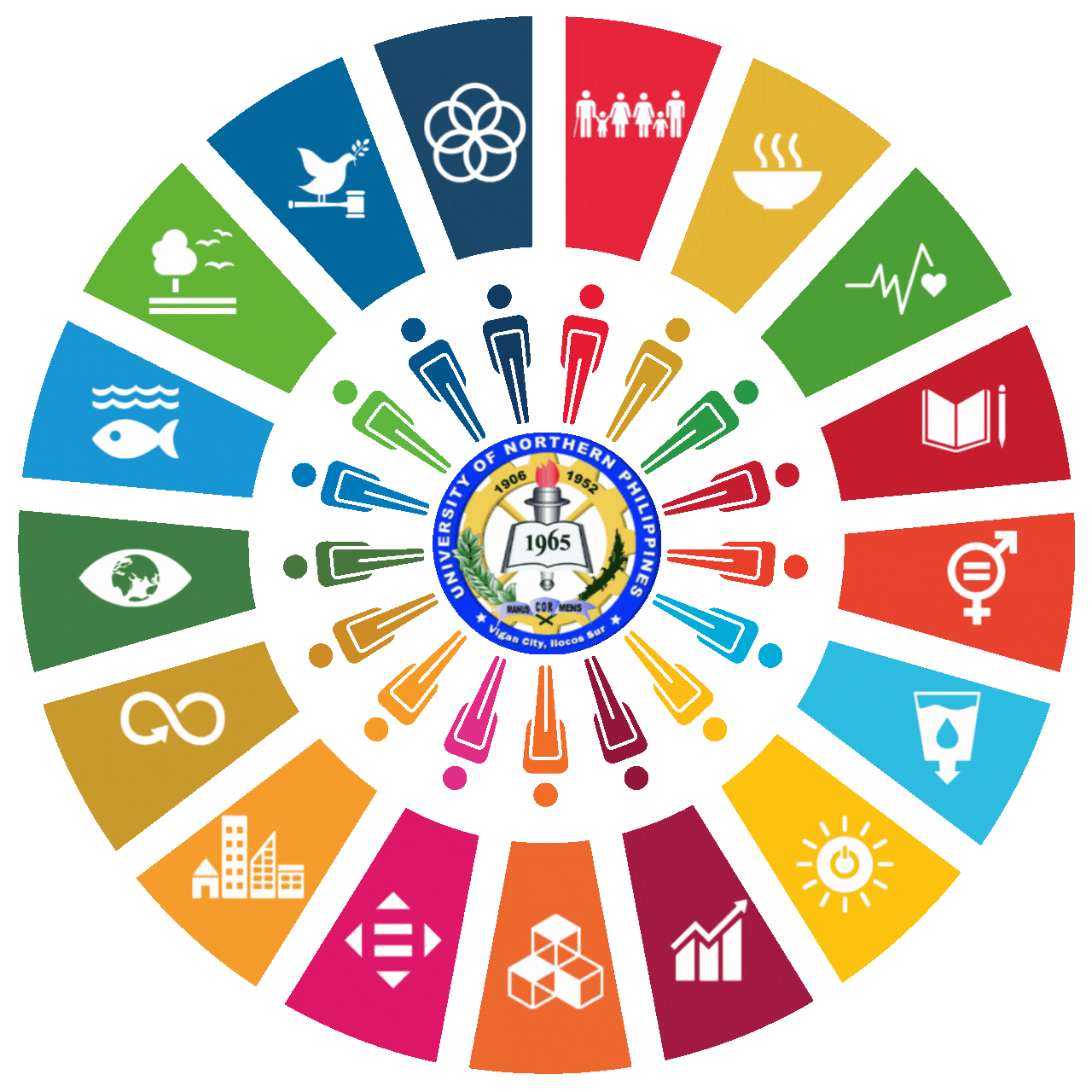

SDG 12 - RESPONSIBLE CONSUMPTION AND PROTECTION
The University of Northern Philippines (UNP) demonstrates a strong commitment to Sustainable Development Goal 4: Quality Education through its comprehensive approach to providing inclusive, and equitable quality education, and promoting lifelong learning opportunities for all.
Evaluation of Coral Reef Health Status of the Fish Sanctuary of San Esteban, Ilocos Sur
Proponents: Jericho A. Mendoza, Ash Lee R. Verzosa, Antonio N. Ayop
Abstract
Studies on corals are lacking in Ilocos Sur’s marine protected areas (MPAs), hindering management effort development. This study evaluated the health status of coral reefs in the San Esteban Fish Sanctuary. Hard coral cover, hard coral diversity in terms of Taxonomic Amalgamation Units (TAUs), and coral reef health status in terms of live coral coverage, algae coverage, sand coverage, and coral mortality index were measured in two sampling stations inside an over-a-decade-old fish sanctuary that does not have previous data on its coral reef health status. The Underwater Photo Transect (UPT) method was employed to take image samples subjected to the Coral Point Count with Excel extensions (CPCe) software for analysis.
The study revealed that the coral reef in San Esteban Fish Sanctuary is in good condition with a hard coral cover of 30.0%, falls under Hard Coral Cover Category C, and a hard coral diversity of 16.8TAUs that falls under Diversity Category D. The fish sanctuary is also in a healthy condition based on excellent live coral coverage, algae coverage, sand coverage, and low coral mortality index. The two stations are more or less the same in terms of the aforementioned parameters. Overall, it is recommended to continuously strengthen the enforcement of the fish sanctuary to protect its coral reefs, measure other parameters that might impact and indicate coral reef health status, employ evaluations inside and outside MPAs in the province, and use high-resolution cameras during image sampling for more efficient analysis.
Keywords: Coral cover, coral reef diversity, coral health status, marine protected areas, Ilocos Sur
Development of Non-Load Bearing Three-Core Stretcher Concrete Masonry Unit with Polyethylene Terephthalate Wastes
Proponents: Chavit G. Abalos, Krisha Mae Jemaima B. Cabe, Ej Alfred R. Manglal-lan, Gaylord A. Frando
Abstract
Persistent problems stem from factors such as the difficulty of waste recycling wherein plastics are substantial contributors having strong environmental impact. To mitigate this dilemma, reengineered plastics are emerging as reforms in solving solid waste management issues. This study aimed to investigate the effects of utilizing Polyethylene terephthalate (PET) as an admixture in a non-load-bearing concrete masonry unit. Moreover, it sought to limit the amount of environmental degradation and prevent ecological and environmental strains caused by plastic. This study used the experimental method which involved compressive strength testing, unit weight, and unit cost analysis. In addition to this, the properties of the materials were studied to arrive at the optimum percent composition to generate the highest efficiency. Five treatments were utilized including the control (0%), 1.5%, 2.0%, 2.5%, and 3.0% PET waste admixture. In the findings, both the control CMU and the 1.5% PET waste admixture have qualified on the standard specification, ASTM C129, for CMU compressive strength. The unit weight decreases as the amount of admixture increases. In terms of unit cost, the sample with the highest percentage of PET waste has the lowest unit cost but with the lowest compressive strength. However, between the control CMU and the 1.5% PET waste admixture, the latter has a lower unit cost. Therefore, it can be inferred that adapting the use of PET wastes as admixture at 1.5% showed the most competence proving to reduce plastic waste environmental issues while gaining higher possible profit when introduced into the commercial industry of construction supplies. For future studies, a Comparative Analysis of walls made with plain and PET waste concrete masonry units may be conducted to improve the application of the material.
Keywords: Polyethylene Terephthalate, Concrete Masonry Unit, Admixture
Biogas Generation from Vegetable Waste and Horse Dung through Improvised Anaerobic Digester
Proponents: Maria Angelica J. German, Rosaly P. Paiste, Crissa Mae D. Rafanan, Vincent P. Pilien
Abstract
Biogas significantly reduces the environment’s vast supply of animal manure and food waste, which causes nitrogen and water pollution. Biogas is a sustainable fuel created when microorganisms decompose organic matter, such as food or animal waste, without oxygen, which is known as anaerobic digestion. This study considered vegetable waste (VW) and horse dung as substrates in producing biogas. The study aims to generate biogas in 34 kg of mixed vegetable waste and horse dung into two designs of experiments with different proportions and study how these proportions affect the amount of biogas produced within the period of 10 and 13 days. This study employed an experimental research design wherein data were collected through surveys, timely observations, and primarily through experiments. After ten days, the first experiment produced yellow with a little blue, while the second experiment produced blue with a little yellow. Likewise, after 13 days, the mixed waste consisting of 30% each of VW and Horse manure was fed into the digester (experiment 1) and lasted 3.22 minutes. In contrast, the mixed waste, consisting of 20% VW and 40% Horse dung, was fed into the digester (experiment 2) for 7.22 minutes. Furthermore, both experiments produced blue with a little bit of yellow. On water temperature, experiments 1 and 2 were able to boil 200 ml of water from 3°C to 5.20°C and 6.10°C, respectively. These results signify the effectiveness and efficiency of the chosen substrate in producing biogas. It is recommended that future research in the same field shall consider economy and comparison between different substrates. Also, to measure biogas’s heat capacity and design a digester with catalyst and substrate mixer.
Keywords: Substrate, sustainable fuel, methanogenic bacteria, biogasification
Cubyertos de Kawayan
Proponents: Shean M. Condino, Fraulein Claire G. Ronquillo, Michelle M. Pacpaco
Abstract
The study aimed to determine the acceptability of bamboo cutlery products, primarily tableware, to lessen the use of plastic cutleries and to be the most sought–after store offering eco-friendly and sustainable products by assisting in the elimination of single–use plastic waste while making a meaningful impact on the lives of the people in the Province of Ilocos Sur. The objective of the study is to promote the usage of eco-friendly products as a replacement for plastic cutleries; it serves as a contributor to the action needed by the government to combat environmental destruction and for environmental protection, and to preserve the culture of Ilokanos in using wooden or bamboo cutleries. Alongside the personal factors of the respondents, the extent of knowledge of the residents of Ilocos Sur about bamboo products was also identified about how feasible the bamboo cutlery once established. The study utilized the simple random sampling technique to determine the sample size of the respondents, which utilized frequency and percentage to determine the profile, familiarity, and marketability of bamboo products. The result showed a great familiarity with bamboo products, wherein the respondents stated their keen interest in such products. There is a “High” possibility that the feasibility of the Cubyertos de Kawayan will be established.
Keywords: Bamboo Cutlery, Environmental Protection, Sustainability, Pollution, Feasibility
Initial Inventory and Documentation of Stone/Brick-and-Lime Vats (Baldi) in Some Northern Towns of the Province of Ilocos Sur, Philippines
Proponent: Fatima Nicetas Alonzo
Abstract
This is an initial inventory and documentation of remaining, abandoned and non-functioning vats, locally referred to as baldi, in some northern towns of Ilocos Sur, many of which are in various states of human-mediated damage and natural deterioration. It was undertaken by faculty proponents and students of the College of Architecture of the University of Northern Philippines, Vigan City with a local anthropologist for the period 2017 to 2018. The research sought to establish the significance of the vats in the cultural life of the province. As a descriptive method of research of the qualitative type, the project basically aimed to identify the location of the vats, determine their construction methodology and materials of construction, inscribe their architectural character and features, evaluate their current physical condition and contexts, and ascertain their ownership. The information gathered is structured and presented in a summary of 1) Inventory, in tables, 2) Graphical presentation, 3) Photographs and 4) Description of vat attributes. There are 63 (7 of which could not be measured and could only be photographed) inventoried vats, excluding wells and other features in a few vat assemblages in 17 vat sites (12 of which with visible vat assemblages [sites that include two or more vats]), in 10 barangays of 8 towns (Sinait, Cabugao, San Juan, Magsingal, Santo Domingo, San Ildefonso, San Vicente, and Bantay).


















